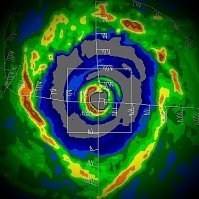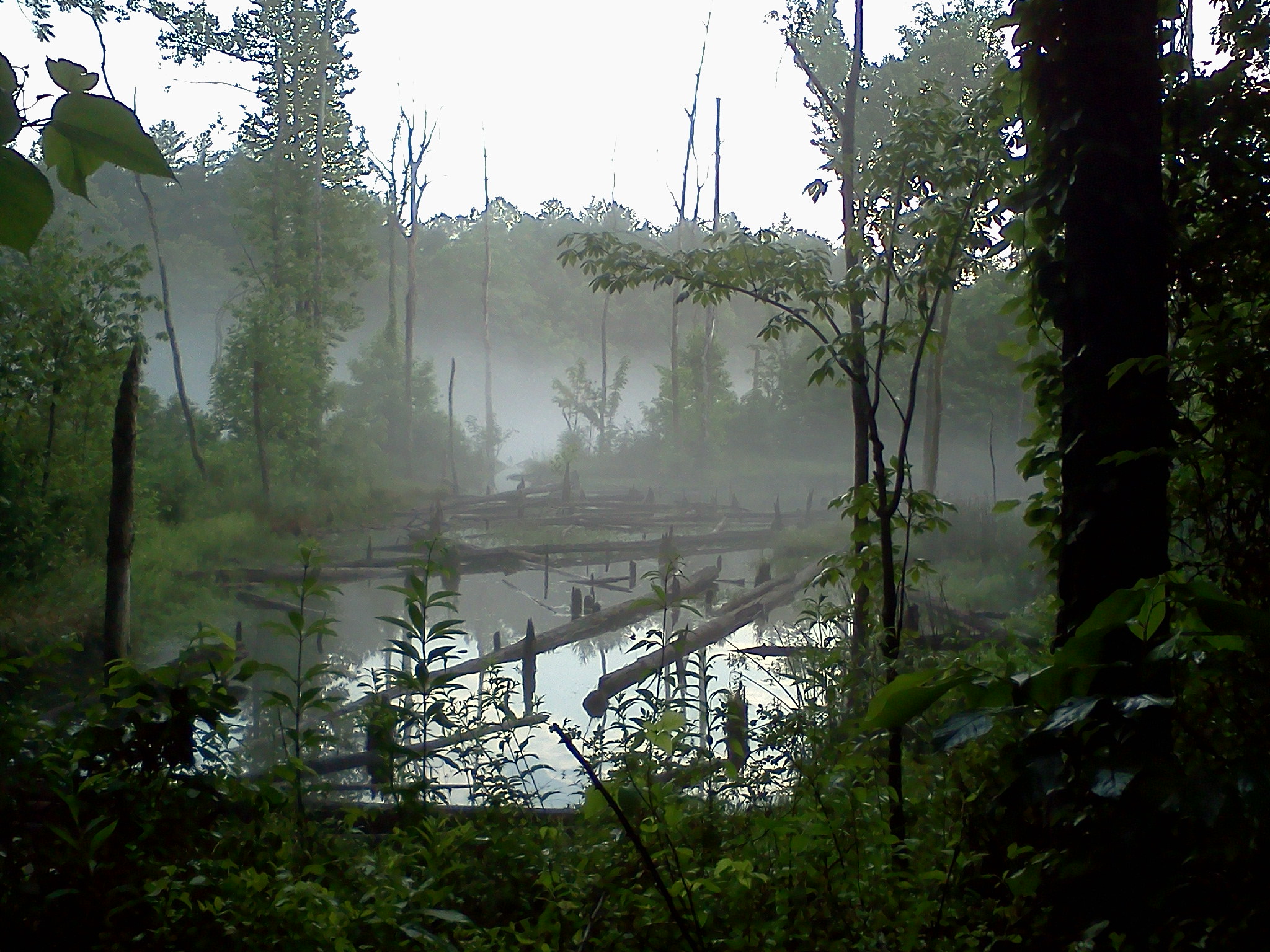-
Posts
4,715 -
Joined
-
Last visited
Content Type
Profiles
Blogs
Forums
American Weather
Media Demo
Store
Gallery
Everything posted by Windspeed
-
Holy guacamole, I didn't expect that NE eyewall to be so intense post-exit Cuba. Good grief. SFMR is too contaminated, but clearly, based on flight-level, Rafael is still a major hurricane.
-
Bifurcation is the word of the day...
-
Rafael is already taking on a somewhat lopsided structure on radar. I'm not sure that it isn't already experiencing some mid-level shear or if this is just a temporary appearance left over from land interaction with Cuba. However, it is interesting that the ECMWF wants to turn and drive Rafael due west and then WSW into the SW GOM. A bit of uncertainty on how this plays out. But I am confident if the GFS camp wins out, Rafael will still get sheared off.
-
Yes, I intended Grand Cayman. Brain was thinking Cayman and fingers typed Cancun. Been doing this a long time...lol.
-
Rafael's eye is becoming more symmetrical and appears closed now on Cancun radar. A more significant period of intensification may be occurring now that will last through landfall over Western Cuba. Would still like to see more symmetry with the CBs around the eyewall and a warming spike within the eye. But there is still plenty of time for Raffael to reach Category 2 intensity. Major hurricane intensity is definitely still possible prior to landfall.
-
988.6 EXTRAP but we're going to need a NE eyewall pass before we have any in situ data to support a hurricane. Looking better and better on satellite and Cancun radar, but recon isn't quite there yet.
-
-
Yeah, I am confident Rafael is little more than a rain event for the NGOM coast. Granted, this is 4-5 days down the road, but the TC shouldn't maintain hurricane intensity. The GFS shows why. A wall of strong westerlies and large variance in the vector of motion between 850 and 200 hPa may decouple any mid-level vorticity, which is obviously why that is being resolved on the TC modeling.
-
Good chance the TC does decouple prior to landfall along the NGOM coast with strong upper level westerlies in place. The remnant low could drift WNW but likely gets absorbed into mid-latitudinal flow. Portions of the Tennessee Valley need the rain, so this will hopefully pan out as a beneficial system. The real TC threats are prior to the GOM with potential strong hurricane impacts to Western CUBA and Isla de la Juventud.
-
Good grief! Typhoon Kong-Rey is really living up to its name here, folks. The IKE on this thing must be insane. Deep intense ring of convection around a massive 55 nm eye with strong mesovorticies rotating around the inside of the eyewall. The sheer size of the low-level and mid-level vortex combined with such intensity is critical. It's just a different breed of TC in the WPAC, even if the size of this one is still kind of rare to be so strong. It's hard to fathom a TC this large being in the GOM. The storm surge alone would surpass 30 feet along the NGOM coast.
-

2024 Atlantic Hurricane Season
Windspeed replied to Stormchaserchuck1's topic in Tropical Headquarters
It's not unusual for a global operational run to miss resolving tropical cyclone genesis when that has yet to occur IRL, even during several days of repeated runs showing a TC. But the 12z GFS still has a TC making landfall in Haiti. But it is not good to focus on specifics like tracks and intensity with a chaotic pattern and big swings in motion. We don't even have an organized disturbance yet, much less a vortex, though we do have pressures beginning to fall that should lead to a surface trough developing. As such, convection is beginning to pop over the SW Caribbean. -
Yeah, the eye has continued to warm. SSTs are ~28°C under Kristy's core. Great enhancement with a strong ULAC aloft and low shear values; at 140 kts intensity, Kristy has been able to reach MPI.
-

2024 Atlantic Hurricane Season
Windspeed replied to Stormchaserchuck1's topic in Tropical Headquarters
-

2024 Atlantic Hurricane Season
Windspeed replied to Stormchaserchuck1's topic in Tropical Headquarters
https://bsky.app/profile/weathertiger.bsky.social/post/3l7773za4l22d -
Major Hurricane Kristy (former Nadine in the Caribbean) is cranking in the EPAC. ADT supports upper Category 4 intensity now. Might even push an MPI of 135 kts before any structural change, or EWRC can take over.
-

2024 Atlantic Hurricane Season
Windspeed replied to Stormchaserchuck1's topic in Tropical Headquarters
Yes, the pattern doesn't really support a phasing scenario that would pull a TC into the eastern seaboard. However, a Caribbean system might still impact Florida as it turns into the westerlies. Certainly, Central America, the Antilles and Bahamas could all be at risk depending on the initial and outcome steering layer. We have at least a week to iron out the details and watch how modeling resolves the interacting features. But overall, I'd rule out any CONUS threat beyond the Florida Peninsula. -

2024 Atlantic Hurricane Season
Windspeed replied to Stormchaserchuck1's topic in Tropical Headquarters
I agree with the above posts about the upcoming midrange signal. That pattern suggested by both ensemble suites, including as much agreement as you can expect given the lead time between all the operationals, is highly suggestive of WCARIB development next week. A lingering surface trough over the SW Caribbean interacts with a disturbance currently positoned in the ITCZ that slides across Venezuela. This times with an amplified ST jet over the MX->GOM->SE CONUS that builds a large ULAC over the disturbance. That's a very volatile atmospheric setup for instability; and given that surface pressures between Jamaica and Panama should be low for an extended period, I'd say that modeling is going to go on a rampage the remainder of the week with TCG next week. -
Probably was a Category 2 at landfall. The radar out of Guantanamo Bay had very intense echoes in the eastern and northern eyewall. Cloudtops were cooling, and the eye was clearing. SAR data suggests intensification into landfall; therefore, Oscar will be a good candidate for an upgrade in post analysis in the post-seasonal report.
-
Eastern eyewall is definitely cranking at the moment... Perhaps 3, maybe 4 hours at most? Also, Oscar's tiny core will probably collapse fairly rapidly right at landfall. The mountainous terrain should disrupt inflow with haste.
-

2024 Atlantic Hurricane Season
Windspeed replied to Stormchaserchuck1's topic in Tropical Headquarters
We have now reached 10 hurricanes on the season. Only 17 other seasons since official records began in 1851 reached double-digits. Granted, pre-satellite era years are underdone, and there are most likely TCs that unknowingly reached hurricane intensity. But based on the reanalysis of historical weather logs and shipping reports, this is what we get. 10: 1870, 1878, 1886, 1893, 1916, 1998, 2012, 2017, 2024 11: 1887, 1933, 1950, 1995 12: 1969, 2010 14: 2020 15: 2005 -
Yes, we may have just had a landfall. But the core is so tiny it's virtually impossible to tell via remote sensing. We'll have to see if there were any OBS to suggest as such in the ground.
-
I would imagine a scramble to get out incoming watches and warnings for the Turks and Caicos and an advisory package for the 11AM AST. This is about as close as you're ever going to see NHC forecasters caught with their pants down. lol...
-
Keep an eye on 11AM AST now.
-
It's a very tiny system, as you can clearly see on microwave. But we haven't had recon for 36 hours. Though San Juan radar suggested a developing mid-level circulation, yesterday, we didn't have any evidence of a westerly wind at the surface within the southern semicircle. But obviously, overnight, the satellite and some remote sensing imagery started to suggest this had spun up a tight vortex. I must admit I am a little surprised that the NHC waited until this morning's 8AM to begin escalating chances of development.
-
Good grief. This TC has a developing eyewall. D'oh!! This needs to be classified immediately. Land interaction is now in play for the Turks and Caicos Islands.




